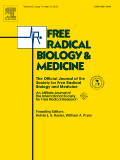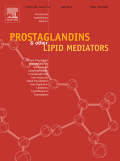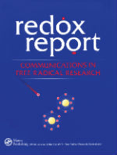
JOURNAL OF PHYSIOLOGY AND BIOCHEMISTRY
Scope & Guideline
Advancing the Frontiers of Physiology and Biochemistry
Introduction
Aims and Scopes
- Metabolic Disorders and Their Mechanisms:
The journal frequently publishes studies on the mechanisms underlying metabolic disorders such as obesity, diabetes, and fatty liver disease, exploring pathways like inflammation, oxidative stress, and signaling pathways. - Cancer Biology and Therapeutics:
Research articles often investigate the molecular mechanisms of cancer progression, particularly focusing on the role of microRNAs, exosomes, and cellular signaling pathways in cancer biology. - Exercise Physiology and Muscle Biology:
The journal includes a significant number of papers on the physiological effects of exercise, muscle metabolism, and adaptations, as well as the role of skeletal muscle in overall health and disease. - Nutritional Biochemistry:
Nutritional studies are prominent, with articles examining the biochemical impacts of various dietary components and supplements on metabolic health, disease prevention, and treatment. - Cardiovascular Physiology and Pathology:
The journal covers cardiovascular health extensively, discussing topics like atherosclerosis, cardiac function, and the effects of different interventions on heart health. - Neurophysiology and Neuroinflammation:
Research on the effects of metabolic disorders on neurophysiology, including studies on neuroinflammation and the implications for conditions like diabetes and obesity, is also prevalent.
Trending and Emerging
- MicroRNA and Exosome Research:
There is a notable increase in studies focusing on the roles of microRNAs and exosomes in various diseases, particularly cancer and metabolic disorders, highlighting their significance in intercellular communication and potential therapeutic targets. - Inflammation and Metabolic Dysfunction:
Research exploring the links between inflammation and metabolic dysfunction is trending, with increasing emphasis on understanding how inflammatory processes contribute to diseases such as obesity and diabetes. - Exercise and Metabolic Health:
The role of exercise in regulating metabolic health is gaining traction, with numerous studies investigating how different types of exercise influence muscle metabolism, fat loss, and overall health outcomes. - Nutritional Interventions and Disease Prevention:
There is a growing emphasis on the impact of dietary components on health, with research exploring how specific nutrients can modulate disease processes and contribute to metabolic health. - Circadian Rhythms and Metabolism:
Emerging research on circadian rhythms and their influence on metabolic processes is becoming more prominent, reflecting a growing interest in how biological clocks affect health and disease.
Declining or Waning
- Traditional Pharmacological Approaches:
There appears to be a waning interest in studies focusing solely on conventional pharmacological interventions for metabolic diseases, as newer approaches such as dietary and lifestyle interventions gain prominence. - Basic Mechanistic Studies without Clinical Relevance:
Research that emphasizes basic mechanistic studies without a clear connection to clinical applications or implications is becoming less frequent, with a shift towards translational research. - Animal Models of Disease without Human Correlation:
There is a noticeable decrease in studies using animal models that do not draw parallels to human health or disease, as the journal increasingly favors research with direct implications for human physiology.
Similar Journals

Acta Physiologica
Unveiling the Wonders of Human PhysiologyActa Physiologica is a premier, peer-reviewed journal published by WILEY, dedicated to the dissemination of high-quality research across the field of physiology. With an impressive impact factor reflective of its Q1 category ranking in Physiology for 2023, this journal is a vital resource for researchers, professionals, and students alike, seeking to explore the complexities of biological systems. The journal is indexed with a commendable Scopus rank of #18 out of 193 in its category, placing it within the top 10% of its field, which underscores its influence and citation frequency within the academic community. Acta Physiologica publishes a variety of articles that address fundamental physiological concepts, innovative methodologies, and cross-disciplinary research. With its open access options, the journal ensures that cutting-edge knowledge is readily accessible, fostering an environment of collaboration and advancement in the study of physiology. Spanning from 2006 to 2024, the journal continues to be at the forefront of physiological research and education, encouraging the global sharing of knowledge through its comprehensive content.

PHYSIOLOGY
Advancing the Frontiers of Physiological SciencePHYSIOLOGY, published by the American Physiological Society, is a leading peer-reviewed journal that has attained an impressive Q1 ranking in the field of Physiology, underscoring its significance in advancing research and knowledge dissemination. With a robust impact factor reflective of its high-quality publications, this journal serves as a critical platform for researchers and professionals to publish their innovative findings. Offering open access options, PHYSIOLOGY ensures wide accessibility to cutting-edge research that spans various aspects of physiological sciences. The journal's dedicated focus on interdisciplinary research enhances its appeal to a diverse audience, facilitating collaborations and discussions that push the boundaries of our understanding in physiology. Established in 2004 and converging toward 2024, PHYSIOLOGY stands at the forefront of scientific inquiry, making a substantial impact in the fields of biochemistry, genetics, and molecular biology.

FREE RADICAL BIOLOGY AND MEDICINE
Illuminating the Role of Free Radicals in Life SciencesFREE RADICAL BIOLOGY AND MEDICINE, published by Elsevier Science Inc, is a premier journal dedicated to the field of biochemistry and medical physiology. With an ISSN of 0891-5849 and an E-ISSN of 1873-4596, this journal stands out with its impressive ranking in the 2023 category quartiles: Q1 in Biochemistry and Q1 in Physiology (medical). Specifically, it has achieved a remarkable position of 29th out of 438 in Biochemistry and 8th out of 113 in Physiology, placing it firmly in the 93rd percentile of its field, as per Scopus rankings. Since its inception in 1987, the journal has focused on advancing the understanding of free radicals and their role in biological processes, encompassing a wide range of topics from oxidative stress to therapeutic applications. Although it does not currently offer open access, the journal's rigorous peer-review process and impactful research ensure that it remains a valuable resource for researchers and professionals seeking to explore the intricate relationships between free radicals and health. The journal's headquarters are located at STE 800, 230 Park Ave, New York, NY 10169, reflecting its esteemed place within the scientific community and commitment to high-quality research.

Skeletal Muscle
Pioneering research that shapes the landscape of muscle science.Skeletal Muscle is a prestigious open access journal published by BMC, dedicated to advancing the field of muscle biology and its associated disciplines. With an ISSN of 2044-5040, this journal has consistently been a beacon of knowledge and innovation since its inception in 2011. Based in the United Kingdom, Skeletal Muscle has established an impressive reputation as reflected in its category quartile rankings for 2023, achieving Q1 status in Cell Biology, Molecular Biology, and Orthopedics and Sports Medicine. This esteemed journal holds notable Scopus rankings, including a remarkable 12th place out of 321 in Orthopedics and Sports Medicine, positioning it in the 96th percentile. The journal is committed to disseminating high-quality, peer-reviewed research that fosters collaboration among scholars, healthcare professionals, and students alike. With a mission to explore the intricate biological mechanisms underlying skeletal muscle physiology and its impact on health and disease, Skeletal Muscle plays a vital role in shaping the future of research in this critical area, ensuring that cutting-edge findings are accessible to all.

PROSTAGLANDINS & OTHER LIPID MEDIATORS
Unraveling the Complexities of Lipid MediatorsPROSTAGLANDINS & OTHER LIPID MEDIATORS, published by Elsevier Science Inc, is a leading journal dedicated to the advancements in the field of lipid mediators, with a specific focus on prostaglandins and other bioactive lipids. This journal, indexed under ISSN 1098-8823 and E-ISSN 2212-196X, serves as a crucial platform for researchers and professionals to disseminate significant findings that span multiple disciplines, including Biochemistry, Cell Biology, Pharmacology, and Physiology. In the 2023 category quartiles, it has achieved commendable positions such as Q2 in Biochemistry and Q2 in Physiology, underscoring its importance and influence in these domains. Although it is not an open-access journal, it provides robust access options, enhancing the visibility of vital research. With its establishment in 1996, the journal continues its commitment to fostering innovative research until 2024, making it an essential resource for those involved in the dynamic realms of lipid biology and medical research.

Frontiers in Physiology
Elevating the standards of physiological scholarship.Frontiers in Physiology, published by FRONTIERS MEDIA SA, is a leading open-access journal that has been at the forefront of physiological research since its inception in 2010. As a reputable publication based in Switzerland, it aims to foster the dissemination of groundbreaking findings across various domains of physiology, engaging a global audience of scholars and practitioners. With a commendable Q2 ranking in the fields of both general physiology and medical physiology for 2023, this journal stands out in its field, achieving a significant Scopus rank of #32/113 in medical physiology and #58/193 in biochemistry, genetics, and molecular biology. Frontiers in Physiology not only commits to maintaining high scholarly standards but also ensures that all its articles are freely accessible, thereby promoting collaborative knowledge exchange. With a clear focus on advancing our understanding of physiological processes, the journal plays a crucial role in the development of innovative approaches to health and disease, making it an essential resource for researchers, professionals, and students alike.

REDOX REPORT
Showcasing Cutting-Edge Advances in Redox ScienceREDOX REPORT is a peer-reviewed academic journal published by Taylor & Francis Ltd, focusing on the latest advancements in the fields of biochemistry, clinical biochemistry, and physiology. Since its inception in 1996 and transitioning to an Open Access model in 2018, this journal has aimed to disseminate high-quality research findings and foster discussions within the scientific community. Positioned in the Q2 quartile across several relevant categories, including Biochemistry, Cell Biology, and Clinical Biochemistry, REDOX REPORT is recognized for its commitment to impactful research. The journal plays a crucial role in bridging the gap between fundamental biochemical research and its clinical applications, making it an essential resource for researchers, professionals, and students alike. With a consistent publication record extending to 2024, REDOX REPORT is dedicated to featuring cutting-edge studies that advance our understanding of redox biology, thereby contributing significantly to the ongoing dialogue in the life sciences.

PFLUGERS ARCHIV-EUROPEAN JOURNAL OF PHYSIOLOGY
Unveiling the Complexities of Life Through ResearchPflügers Archiv - European Journal of Physiology, published by Springer Heidelberg, stands at the forefront of physiological research, showcasing groundbreaking studies since its inception in the 1950s. With a distinguished ISSN of 0031-6768 and an E-ISSN of 1432-2013, this esteemed journal maintains a robust reputation, holding Q1 rankings in Clinical Biochemistry, Physiology, and Medical Physiology as of 2023. Its impressive Scopus rankings place it in the top percentile across various categories, including Biochemistry, Genetics and Molecular Biology and Medicine. Pflügers Archiv serves as a vital platform for researchers, professionals, and students, facilitating the dissemination and discussion of advanced physiological concepts and methodologies. Although it does not currently offer open access, its rigorous peer-review process ensures the highest quality publications that contribute significantly to our understanding of physiological science. Explore the depth of physiological research that shapes our academic landscape today.

Journal of Applied Physiology
Elevating the Science of Health and Exercise.The Journal of Applied Physiology, established in 1948 and published by the American Physiological Society, stands as a cornerstone in the field of physiology and applied health sciences. With an impact factor reflecting its rigorous scholarly contributions, this peer-reviewed journal ranks in the Q1 category for both Medicine (miscellaneous) and Physiology as of 2023, further emphasizing its prestige and relevance. Researchers and practitioners are drawn to its comprehensive scope, which includes physiological and biomechanical responses relevant to health, exercise, and clinical practices, making it an essential resource for advancements in sports science and medical physiology. Though it does not offer Open Access, the journal provides a wealth of high-quality research, with contributions that are crucial for understanding the complexities of human physiology. Its inclusion in Scopus ranks demonstrates a solid commitment to advancing knowledge in the field, appealing to a diverse audience of researchers, professionals, and students committed to exploring the intricate interactions between physiological processes and applied health.

CHINESE JOURNAL OF PHYSIOLOGY
Advancing the frontiers of physiological research.CHINESE JOURNAL OF PHYSIOLOGY, published by WOLTERS KLUWER MEDKNOW PUBLICATIONS, has been a vital resource since its inception in 1971, catering to the expansive field of physiology. Operating out of Taiwan, this journal addresses critical research in both general and medical physiology, providing a platform for innovative studies that contribute significantly to the understanding of biological processes. With an emphasis on disseminating high-quality, peer-reviewed articles, it holds a Q4 ranking in Physiology and a Q3 ranking in Medical Physiology as of 2023, reflecting its commitment to advancing physiological science. The ISSN for this journal is 0304-4920 and the E-ISSN is 2666-0059. While access options are not available as open access, researchers and professionals can still benefit from its valuable insights. Notably, it ranks #78/113 in Medicine - Physiology and #159/193 in Biochemistry, Genetics, and Molecular Biology - Physiology on Scopus, indicating its growing influence in the scientific community. We invite researchers, professionals, and students alike to explore the wealth of knowledge featured within the pages of the CHINESE JOURNAL OF PHYSIOLOGY.